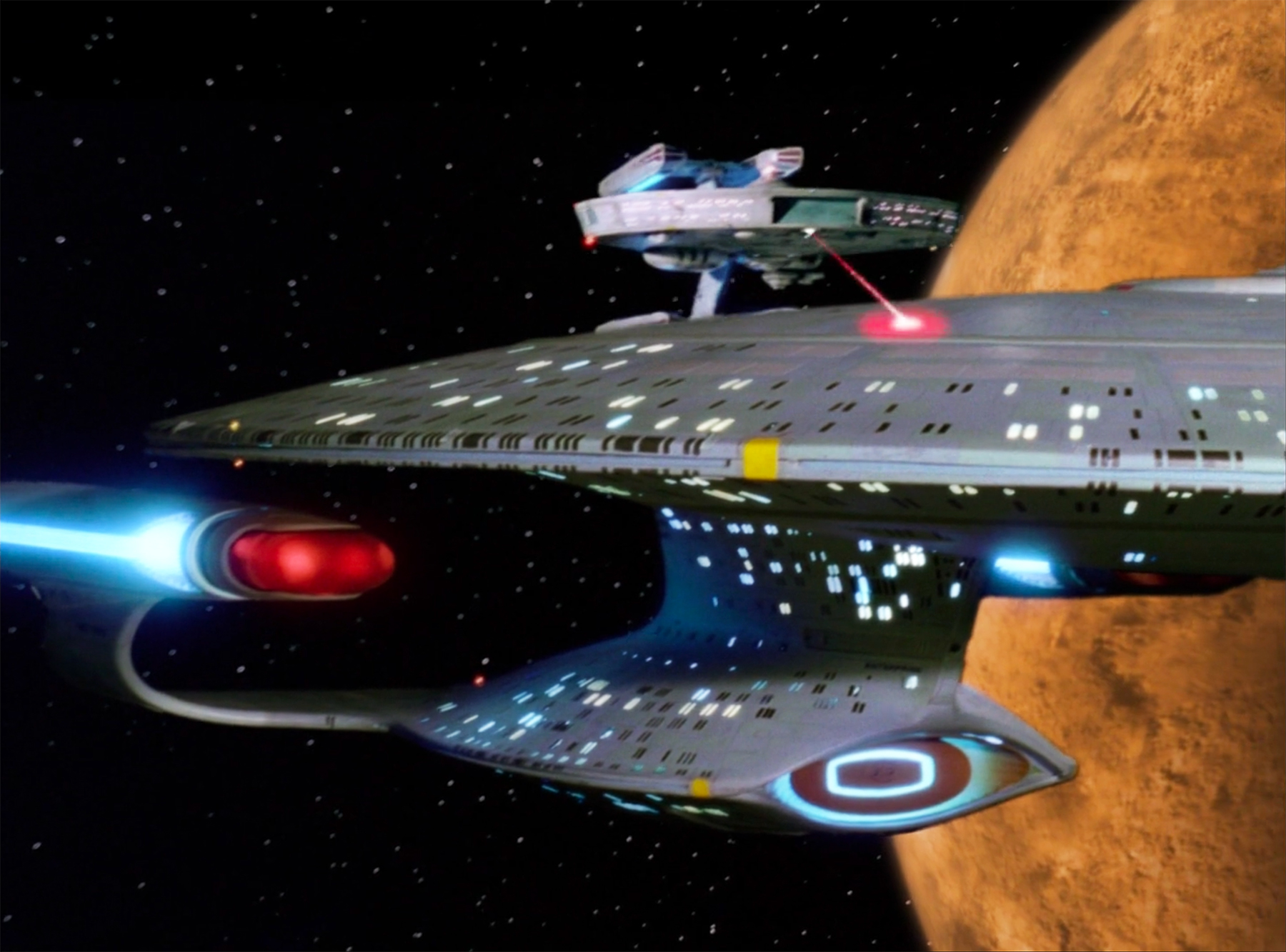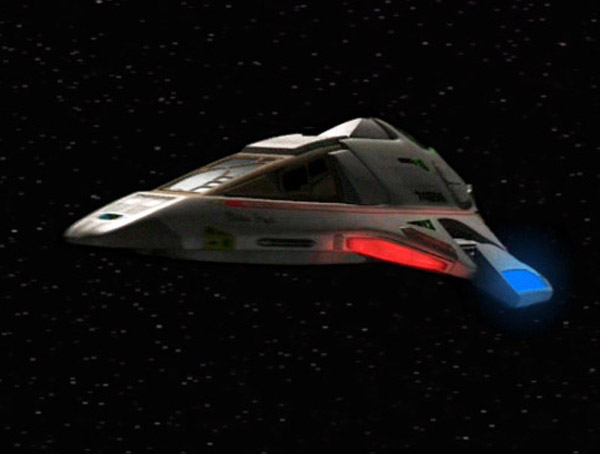Star Trek: Attack Wing is almost equal parts list building and piloting. Certainly, some would argue that the List Building part is more important than the piloting part, since a good combo will often beat a good pilot with a bad combo. I've come into some criticism in the past since I have dismissed some cards as the refuge of a poor pilot. This got me thinking about the different phases of the game.
The Early Game:

At the start of a game of ST:AW you have all of your combos available, none of your discards have been discarded and few, if any (Jennifer Sisko withstanding) of your disables have been disabled. Certain upgrades seem somewhat less useful in the early game, since they don't really factor in until after the engagement has been made and after the initial joust has been completed. In the early game, positioning is important, as is piloting. Even if you have a killer combo, you want to make sure that you are in the perfect position to ensure that your combos go off. There are a number of cards that help to win the positioning battle in the early game that become less and less useful as the game goes on, like Lure.
Lure is currently my favourite card in the game, since it allows you to control when one of your opponent's ships enters the initial melee. I used it in one game at my last op to force one of my opponent's fleet out of formation, meaning I was only facing down 2 ships and 8 red dice instead of 3 and 12. Since my fleet was essentially 2 ships with 10 dice, the importance of being able to avoid the fire of one of those ships helped me to "win" that initial engagement in a way I wouldn't have been able to do otherwise. Lure is a quintessential early game card since it requires your opponent to be outside of range 3 when it is used. As the enemy advances towards you, the opportunity to use Lure becomes rarer and rarer.
Another early game card is the aforementioned Jennifer Sisko (MU). In fact, Jennifer Sisko is so early game that its effects are both utilised before the game even begins. The added slot only works during fleet building, whilst the disable effect works after set up but before the first turn. Jennifer Sisko is also an interesting card that starts out as an early game card, before becoming fuel for a late game ability, a card like Sakonna or Voyager B'lanna Torres. Certain abilities, like Mirror Benjamin Sisko, allow you to discard upgrades in order to receive a bonus to attack or defence dice. Jennifer Sisko, Sakonna and Torres all have abilities that come into play in the fleet building or set up phase of the game. Once their abilities have been used they do nothing for the rest of the game, but become discard fodder (just to clarify, slots are only added at fleet building, and if the card granting the extra slot disappears later in the game, that has no effect on the slots that have been added. This also means that you can't transfer these cards to add extra slots onto a ship after the game has begun). Some of the perfect cards to discard with an ability like Mirror Sisko are cards like Jen Sisko, Sakonna and Torres (in my play-group, the act of using MU Ben Sisko to discard MU Jennifer Sisko is known as the "domestic violence" play).
Most discards are also early game pieces - as are some disables. If you are planning to use Projected Stasis Field as a means of crippling an enemy ship in order to win the initial engagement, you aren't going to have PSF later on in the game. Similarly, using Interphase Generator to win the opening engagement means that you won't have that particular tech to deal with things that are going to happen in the late game. What cards like this do, however, and what you should consider from these cards in the early game, is allow you to be in a better position going into the late game. As an example, if you are using IG to cancel 2 hits and turn them into a single hit in round two, is that going to benefit you more than saving it for the late game? Maybe in the late game, your opponent will have an opportunity to attack you with more dice than they do in the early game (thanks to something like Biological Technology) and having an IG to stifle their plans then will be more meaningful than being able to save one hit at the early stage of the game.
This logic applies to disables too, especially when you have no easy way of recycling those discards - in my PSF build, I run a Tactical Officer (KLI) on each of my non-PSF ships, and essentially I use them as discards, since I have no way to re-enable them other than spending my action, which would be better spent on using Drex or N'Garen. Essentially, once they are used once, they are unlikely to be used again. This isn't always the case, and if you have cards like Phlox, Ogowa or the Doctor, you can re-enable those cards and use them multiple times. Consider this carefully before you do so though, as you have to ask yourself how important cards like this will be after the initial engagement.
I should discuss briefly what I mean by "winning" the initial engagement: most fleets in the 50/3 suggested format (at 120 Sp) have either 2 50 point ships and a 20 point support ship OR 3 ships of roughly 40 points. I have seen some variations on this (50/40/30) but the two examples I've highlighted are the most frequently seen. In 90+blind, the variation is even lower, as mostly you'll see one ship at 50 and one at 40 or two at roughly 45 each. Assuming you are running the same or similar load-out, you should be looking to destroy one ship of 40-50 points in the initial pass without losing one of your own in order to be deemed a "winner". My PSF build (detailed here) works by isolating one ship to be hit by the PSF whilst my two heavy hitters can line up to destroy it. Most of the time, after PSF has disabled shields and Klingon Boarding Party has disabled all the upgrades, my opponent has between 4 and 8 hull to chew through. With the two big hitters rolling 5 dice with both re-rolls and BS conversions (one of which will be a crit) the statistics say that I'll succeed in swinging the odds in my favour. High CS is important in this situation since I want to be able to swing the odds in my favour before my opponent gets a chance to fire back at my weakened PSF carrier and swap one of their ships for one of mine. If you've PSF'd the right ship, you can avoid their incoming fire to such an extent that you should be able to survive the return fire even in your weakened state. Lure helps with this even more by moving one of their ships out of position: 3 ships, one is PSF'd and destroyed, one is Lure'd and out of position, at which point you are trading 3 of your ships' fire for one of theirs, and you "win" the initial engagement.
There are tactics you can use to avoid this state of affairs; Movement upgrades like Forrest and In'Cha help to stop you from being out of position thanks to Lure whilst PSF can be similarly neutralised by keeping your ship at range 3 from the carrier ship. This makes cards like Quark and Tahna Los better, since if you are hiding PSF your opponent can't react to it, can't disable it with Jen Sisko and won't know that they need to stay at range 3.
So to distil my long ramble:
- The early game is the first 2-3 turns leading up to and including the initial engagement.
- A fleet built to succeed in the Early Game will "cash in" their discards and disables early on in order to ensure that they'll get a favourable result out of that initial engagement.
- An "Early Game Fleet" is unlikely to rely on cards whose value increases as the game goes on
- An EGF will have high Captain Skill
- An EGF will want the game to end quickly, since as the game goes on, their ability to use the combos they have designed in list building will disappear.
Next time I'll take a look at the mid and late game and how you can build a fleet to thrive later on, and increase your chances of winning as time ticks away.
Thanks for reading, I'm Not Picard!

